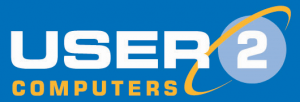The ‘Powerfoyle’ mini, screen printable solar cells produced by Swedish startup Exeger could be a breakthrough in providing a renewable, sustainable, potentially endless power source for all kinds of gadgets and devices.
What Is ‘Powerfoyle’?
Powerfoyle is a flexible solar cell that can be screen-printed into strips. Powerfoyle incorporates a special coloured dye which absorbs the light from any angle under any light conditions, indoors or outdoors, and acts just like an artificial photosynthesis. These mini solar cells, therefore, turn light into energy, and can be incorporated into any kind of gadget or device, giving it a potentially endless, independent power source. Powerfoyle is silicon-free and, unlike other types of solar cells, its fully active surface means that, even in partial light exposure, it still works.
Printable
It’s reported to take only 23 seconds to manufacture approximately 100 to 200 cells in one run using high-speed screen printers. The cells can be printed into any type or form and can be produced in sizes ranging from 15cm² to 500cm². The printed solar cells can easily be shipped to partner companies along with instructions of how to incorporate them into products.
Products
Examples of the kinds of products into which the Powerfoyle solar cells have and could be incorporated include headphones, portable speakers, remote controls, helmets, vests, hearing protection for smart workplaces, and IoT devices such as trackers and sensors.
Others
Other organisations are also manufacturing printable, flexible, lightweight solar cells, including CSIRO (Commonwealth Scientific and Industrial Research Organisation) in Australia, and the MIT Energy Initiative (MITEI).
Disadvantages?
Disadvantages of some of the printable solar cells currently being produced could include efficiency challenges through not using silicone, the amount of time that the technology could take to reach the mass market, and the technology possibly being short-lived, although improvements could be rapid.
What Does This Mean For Your Organisation?
Thinking about the vast number of IoT devices and gadgets that could benefit from having their own renewable, potentially endless power source built-in gives some idea if the scope of this type of revolutionary product. The fact that the solar cells can be any shape and size, can be printed in quantity quickly at low cost, and installed at low cost gives it real commercial potential. Also, the fact that it would reduce demand on base-load power from the grid and could get around energy policy inertia in some countries show its huge green potential. These cells could, therefore, be used across multiple industries and sectors and represent a low-cost, high value way to help towards achieving environmental targets as well as meeting the practical power needs of products in an innovative way.




